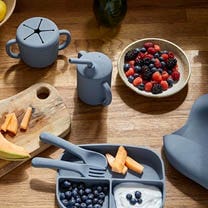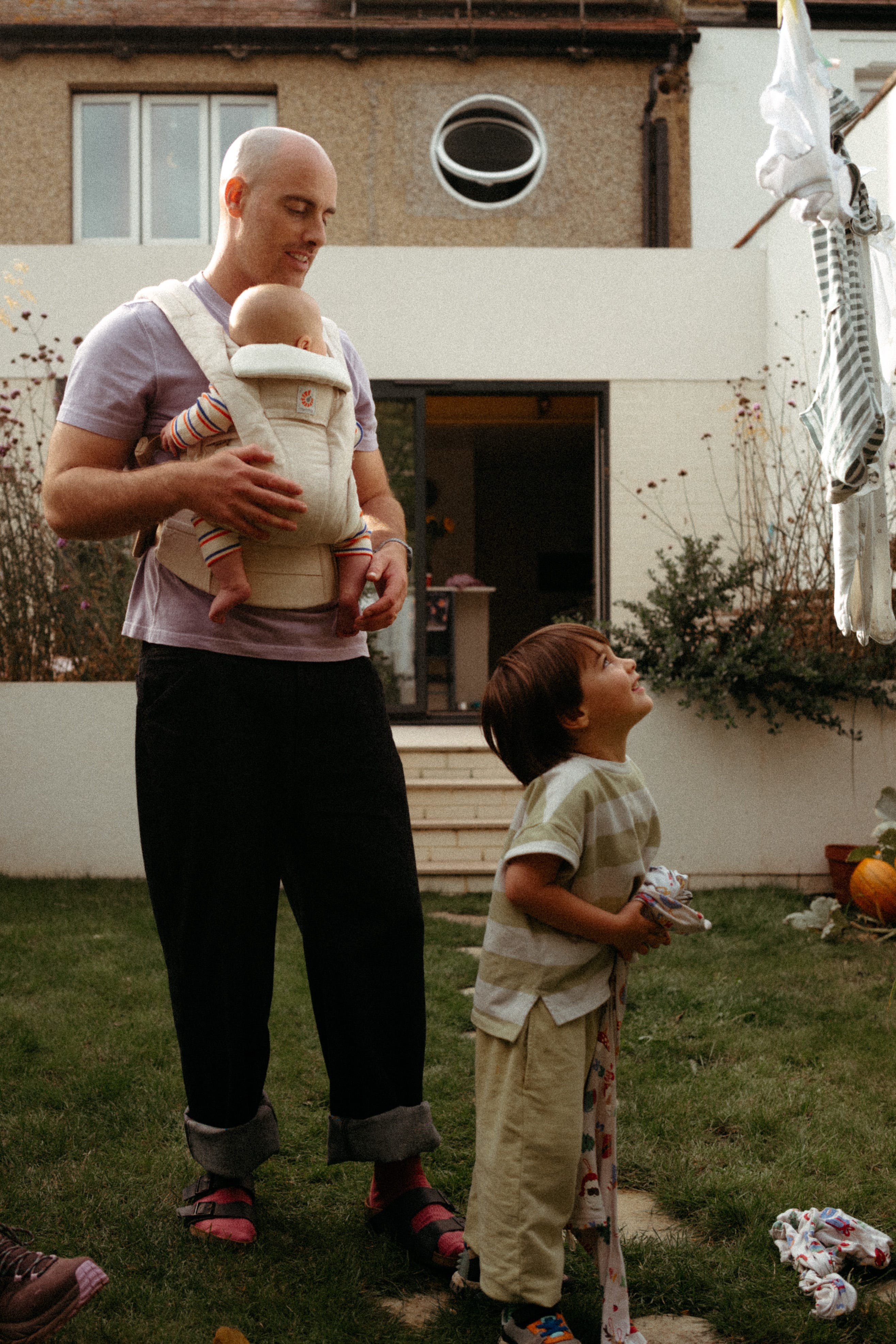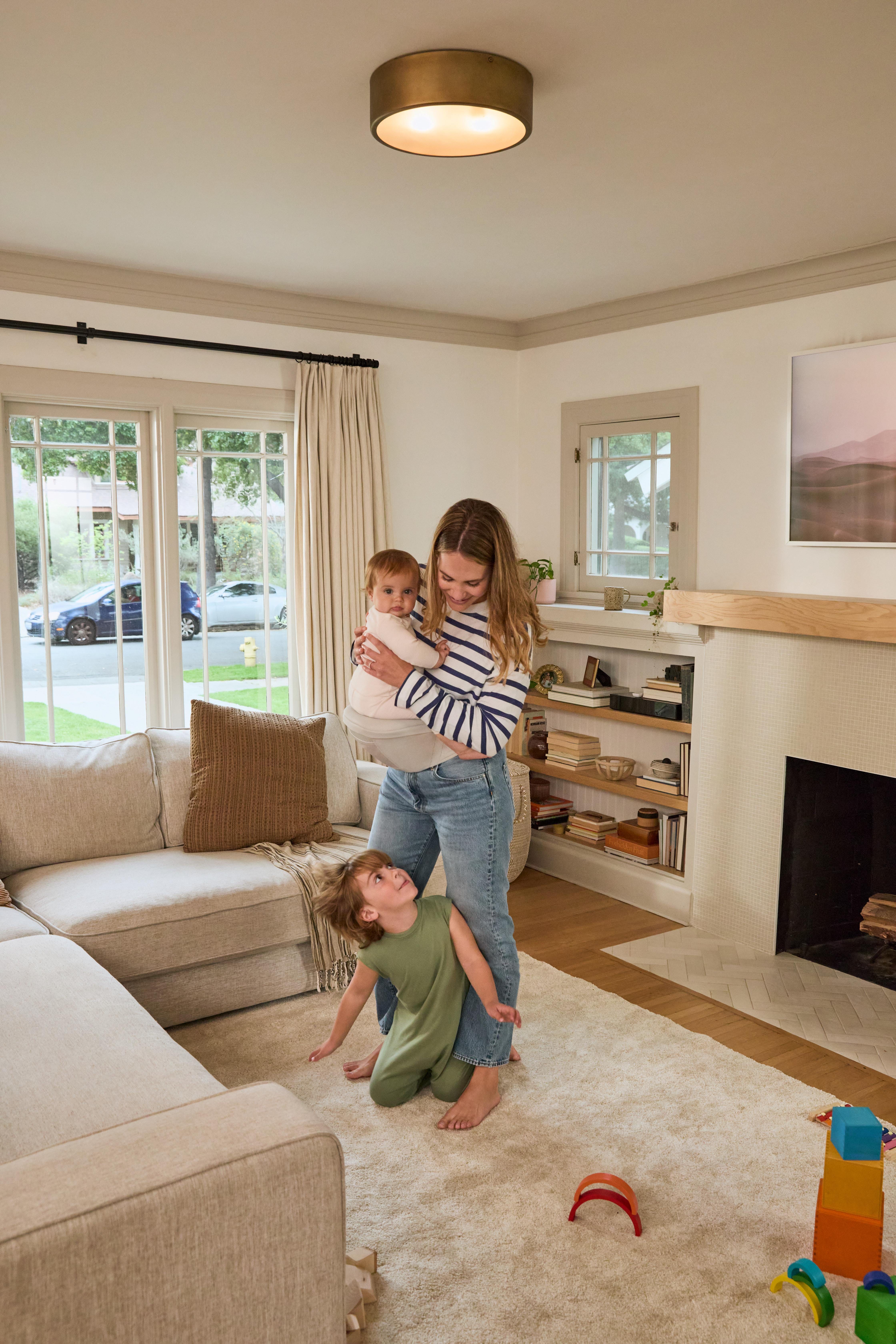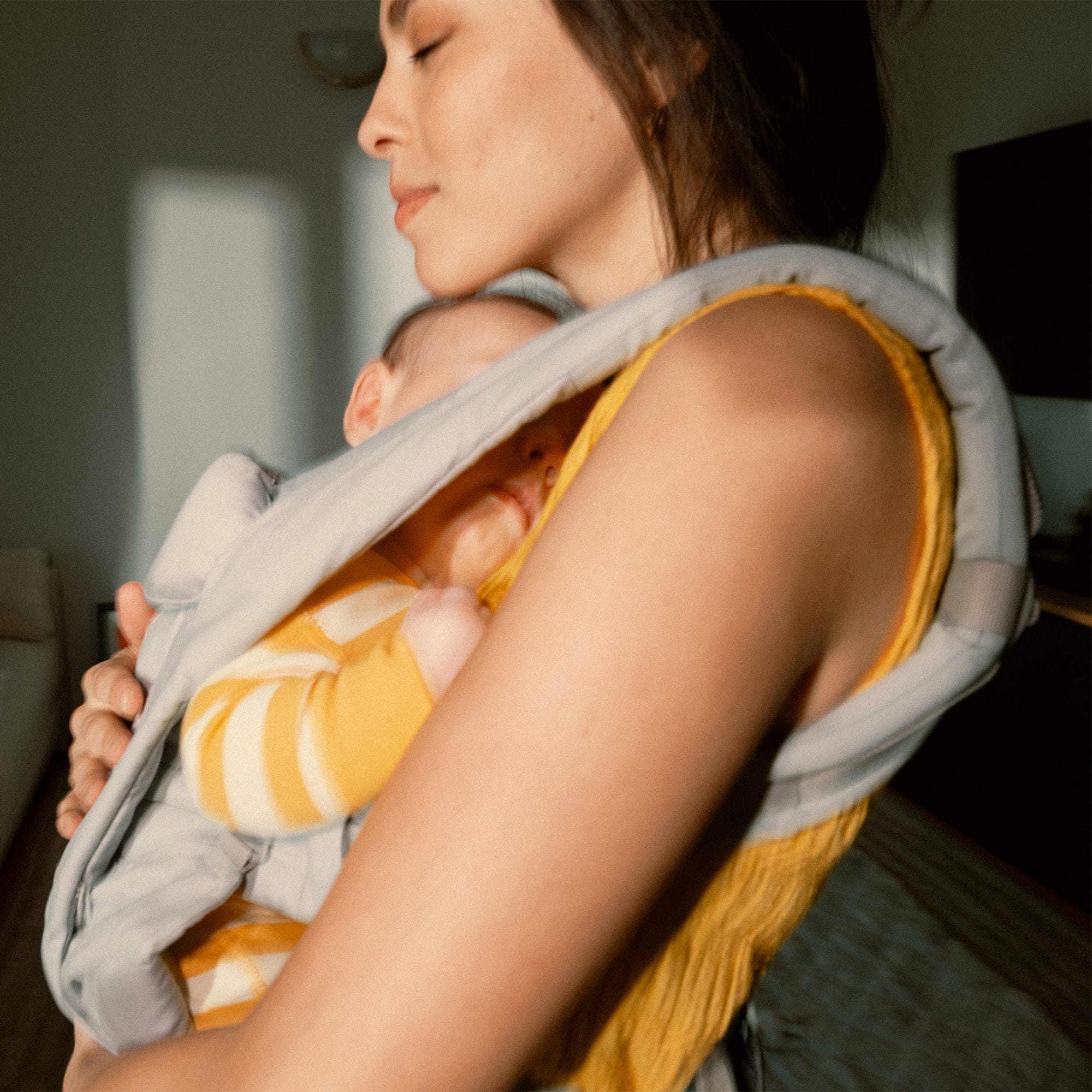
How to Relieve Back Pain from Carrying a Baby
Carrying your baby is a beautiful way to bond, but it can also take a toll on your back if done incorrectly. Many parents experience back pain from carrying a baby when the carriers are used improperly. The constant lifting, holding, and feeding positions can lead to muscle strain and discomfort.
If you're wondering how to relieve back pain from carrying a baby, you’re in the right place! In this guide, we’ll share practical solutions for pain relief, tips for preventing back strain, and when to seek medical advice.
Tips for How to Relieve Back Pain from Carrying a Baby
If you’re experiencing mid back pain from carrying a baby, or pain in your lower or upper back, here are effective ways to find relief:
1. Adjust Your Babywearing Posture
Wearing your baby incorrectly can strain your spine. When using a baby carrier, ensure:
✔️ Your baby is high enough to kiss the top of their head
✔️ Their legs are in an "M" position, with knees higher than their bum
✔️ Your shoulders are relaxed, not hunched forward
✔️ The carrier distributes weight evenly across your shoulders and hips (The waistband should go higher than you think, on your true waist, and the shoulder strap buckle should cramp close to your neck.)
- Get the perfect fit with your babywearing educators and pros with a free babywearing consultation!
- The best baby carrier for back pain—is a carrier that is designed to support the baby and THE wearer with an ergonomic design. All of Ergobaby’s carriers pass the most rigorous tests for ergonomic support and safety. Carriers like the Omni Deluxe are designed for extended wears with extra lumbar support, padding and more!
All About Baby Carriers for Nature Adventures
2. Use a Hip Seat for Shorter Carries
If you frequently carry your baby in your arms, a hip seat can make a big difference. A hip seat helps:
✅ Reduce strain on your lower back
✅ Distribute weight across your hips instead of shoulders
✅ Make quick ups and downs easier
For parents who constantly shift their baby from hip to hip, this is an excellent ergonomic solution to prevent back pain. Here's a few tips before using a hip seat!
Important note: hip seats share designed for babies who have good head and neck control and can sit up on their own. It’s not safe to use a hip seat before that.
Emotional Benefits of Getting Outside
Spending time in nature with your baby can strengthen the bond between you. The simple act of holding your baby close, feeling their warmth, and sharing new experiences together can create strong emotional connections. It’s also a wonderful way to reduce stress and improve your mood. When my littles were extra fussy, I’d take a walk around the neighborhood. Even though I don't live in an area with trails and surrounded by nature, simply behind outside changed everything. A little vitamin D does wonders!
Cognitive Development
Nature is a sensory wonderland for babies. The different sights, sounds, and smells can stimulate your baby’s senses and promote cognitive development. Watching leaves rustle, hearing birds chirp, and feeling the texture of a tree bark can all contribute to their learning and development.
3. Improve Your Lifting Technique
Lifting your baby incorrectly—especially from cribs, car seats, or the floor—can lead to lower back pain from carrying a baby. Here’s the correct way to lift:
✔️ Bend at your knees, not your waist
✔️ Engage your core muscles as you lift
✔️ Keep your baby close to your body
✔️ Avoid twisting while holding your baby
Read 5 Things to Know Before Using a Baby Carrier.
4. Stretch and Strengthen Your Core
Weak core muscles contribute to mid back pain from carrying a baby. To strengthen your core:
- Try gentle postpartum exercises like pelvic tilts and cat-cow stretches
- Focus on lower back stretches to release tension
- Incorporate yoga poses, such as child’s pose or downward dog
If you’re pregnant and still carrying a baby, check out Safe Babywearing While Pregnant for additional support tips.
Exploring Nature with a Baby Carrier
5. Apply Heat or Ice for Quick Relief
✔️ For inflammation and sharp pain, use an ice pack
✔️ For muscle tension and stiffness, apply a warm compress or heating pad
These simple home remedies can soothe sore muscles and make carrying your baby more comfortable.
6. Massage and Foam Rolling
A gentle back massage or foam rolling can ease knots and stiffness. Focus on areas like:
✔️ Upper back pain from carrying a baby—massage your shoulders and neck
✔️ Mid back pain—use a foam roller on your thoracic spine
✔️ Lower back pain—massage or stretch the lumbar area
Advantages of Using Strollers for Nature Adventures
While baby carriers are fantastic for mobility and closeness, depending on the adventure of choice you might want to be a stroller along too.
There are a LOT of baby stroller options on the market. So we understand how confusing it can be to choose the one that’s right for your family. Not only are there a variety of brands, but a variety of strollers that serve different purposes.
There are a few types of strollers on the market:
- Full-sized stroller: This is typically the stroller parents thing of buying for all its versatility.
- Lightweight or umbrella stroller:These compact strollers are perfect for on-the-go adventures.
- Jogging stroller: Designed for parents who want to combine fitness with outdoor adventures.
- Double stroller: Designed for parents with multiple kids, especially twins.
- Car seat carrier: These strollers connect to a specific car seat. We don't typically recommend these as they can be unsafe for baby and uncomfortable for parents who are pushing.
Learn more about the types of strollers and which one would be best for you.
How to Prevent Back Pain from Carrying a Baby
Preventing back pain is just as important as relieving it. Here’s how to protect your back from strain:
1. Use an Ergonomic Baby Carrier
A poorly designed baby carrier can put extra stress on your spine and shoulders. Choosing the best baby carrier for back pain ensures:
✔️ Even weight distribution
✔️ Support for your lower back
✔️ Comfortable straps that don’t dig in
Not sure which carrier is right for you? Take our Carrier Quiz to find your perfect fit!
2. Strengthen Your Back and Core
Stronger muscles reduce the risk of strain. Include these exercises in your routine:
✔️ Planks (build core strength)
✔️ Bridges (strengthen lower back)
✔️ Reverse flies (target upper back muscles)
Doing these just 10 minutes a day can prevent back pain from carrying a baby.
3. Switch Sides Regularly
If you always hold your baby on the same side, your muscles can become imbalanced. Make an effort to:
✔️ Alternate arms
✔️ Shift carrying positions
✔️ Use a hip seat for extra support
Learn Babywearing Tips from a Babywearing Educator to make babywearing more comfortable.
When It’s Time to Contact a Doctor
While mild back pain from carrying a baby is common, certain symptoms may require medical attention.
Seek professional help if you experience:
- Severe pain that doesn’t improve with rest
- Numbness or tingling down your legs
- Difficulty standing or walking
- Pain that worsens over time
If any of these red flags apply to you, consult a doctor or physical therapist to rule out any serious conditions.
Being a parent is physically demanding, but back pain from carrying a baby doesn’t have to be part of the experience. With proper posture, muscle strengthening, and ergonomic baby gear, you can prevent and relieve pain effectively.
If you're looking for the best baby carrier for back pain, explore our Ergobaby Baby Carriers and Hip Seats for superior comfort and support.
By making small adjustments, you can enjoy pain-free babywearing and focus on what truly matters—bonding with your little one!
Don't forget to schedule a free 1:1 fit check with our babywearing educators to help get you the perfect fit!
























